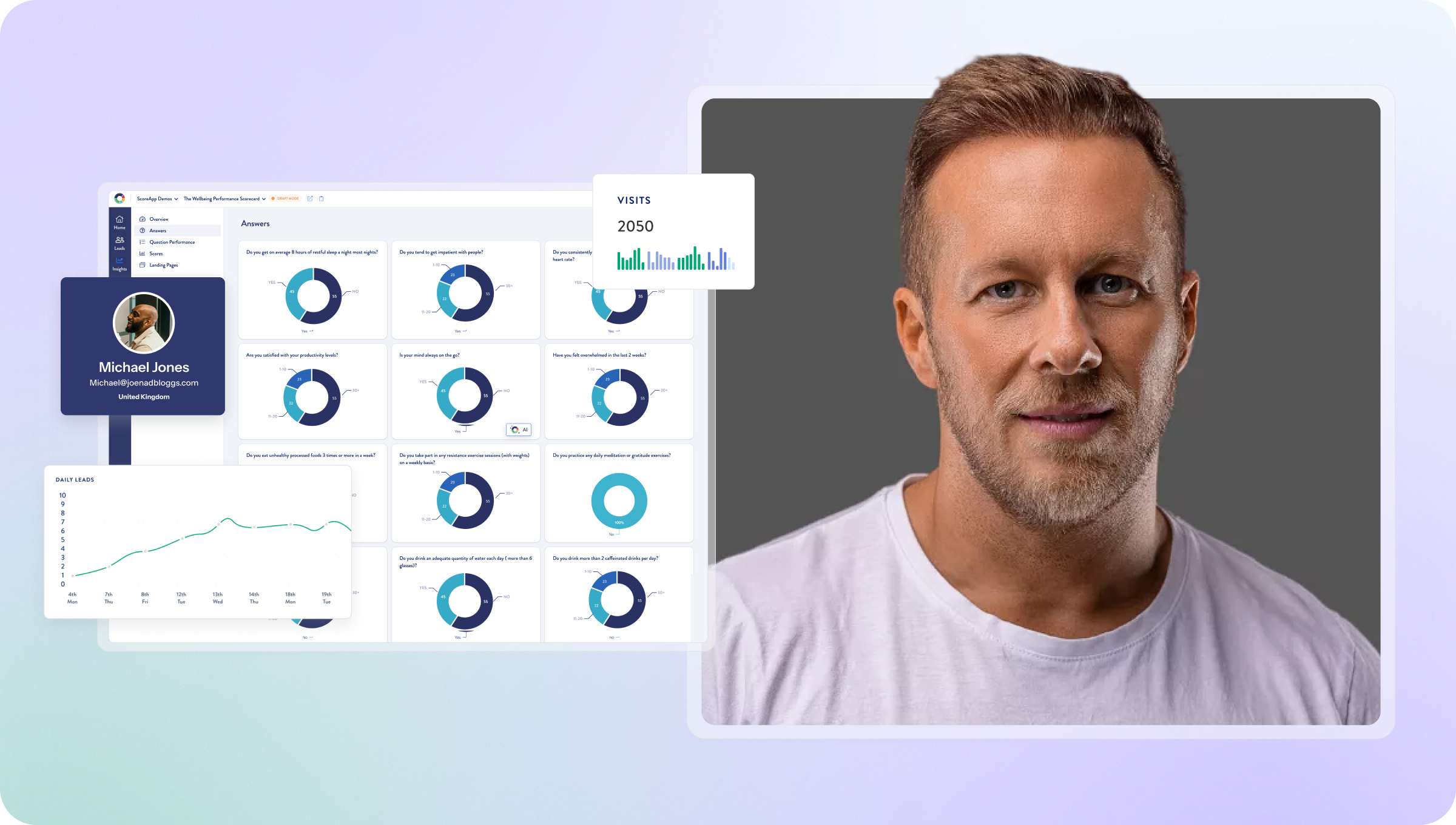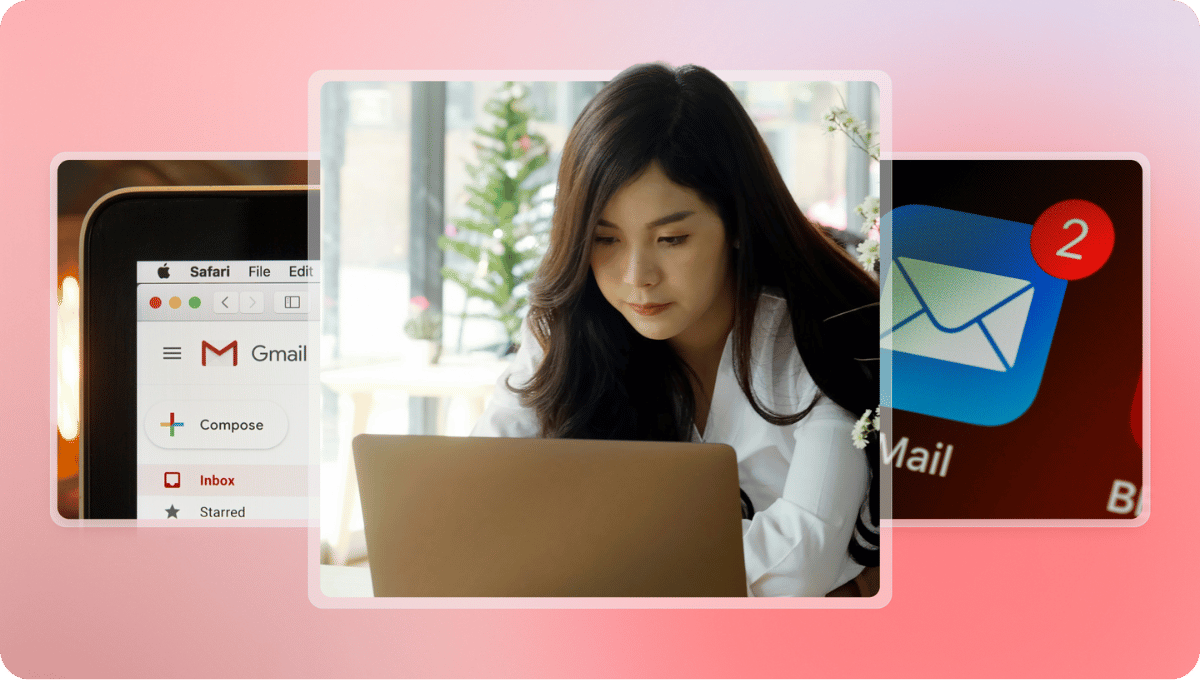Using the Zeigarnik Effect to Keep Your Clients Hooked


Have you ever wondered why an unfinished task keeps popping into your mind, but you forget things you’ve completed?
- You’d intended to empty your inbox before the weekend. Now you can’t stop thinking about the 5 emails you didn’t reply to, even though you did respond to 20.
- You’re still talking about the end-of-season cliffhanger you watched two weeks ago—and it’s going to be months before the new one hits. Netflix does this sooooo well!
- Brilliant—you’ve completed 80% of a new social media profile section, but your brain keeps niggling you to do the last 20%.
The psychological principle behind this is called the Zeigarnik effect. We’re going to show you how to wield its power to:
- Keep potential customers engaged
- Increase sign-ups and conversions
- Encourage repeat visits and long-term relationships.
ScoreApp makes it easy to apply this principle in your marketing, using quizzes, progress tracking, and interactive content to keep you top of mind.
Bluma Zeigarnik’s fascinating scientific discovery
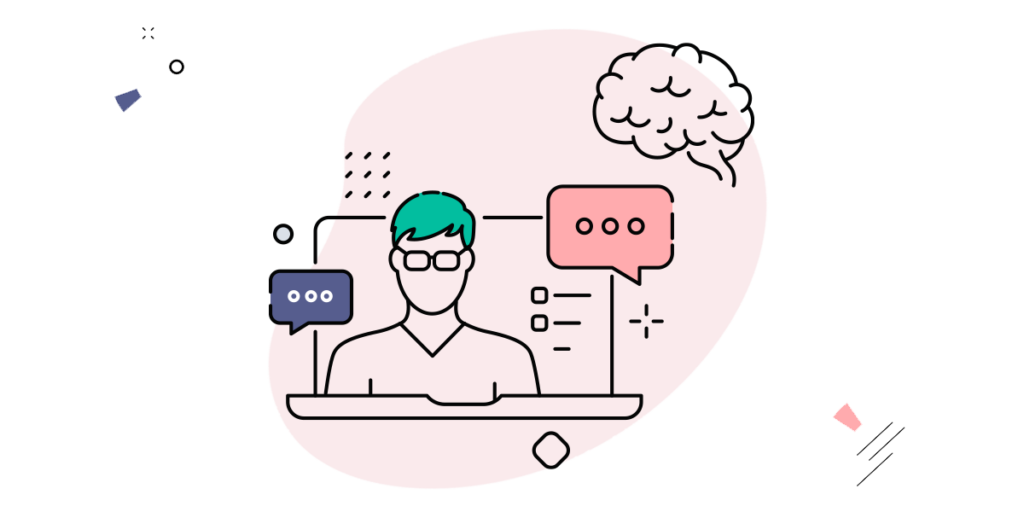
It’s important to acknowledge the people who discovered the psychological concepts we often take for granted today. While this isn’t a history lesson, seeing the origins of the thinking helps us understand its application to buyer psychology today.
Key facts:
- Bluma Zeigarnik (née Gerstein) was born in Lithuania (then part of the former USSR) in 1901 to a Jewish, Russian-speaking family.
- She was one of the first Russian women to attend university and got her PhD from the University of Berlin in 1927.
- Her paper ‘On finished and unfinished tasks’ (‘Über das Behalten erledigter und unerledigter Handlungen’) was published in 1927, to international recognition. This research underpins what we now call the Zeigarnik effect.
‘On finished and unfinished tasks’
Bluma’s research was sparked by a random observation that waiters in a busy restaurant could remember orders with unpaid bills, but struggled to remember details of orders that had been paid. Concluding the task seemed to affect their ability to remember.
Bluma examined this idea through a series of experiments with adults and children. They were all given tasks to do, and half of the participants were interrupted during those tasks. An hour after the tasks were completed, she asked the participants to explain what they did.
She discovered that 90% of the adults who were interrupted could better remember the task than those who were uninterrupted. And the children only remembered incomplete tasks—forgetting completed tasks entirely. She published her result in the paper ‘On finished and unfinished tasks’.
This link between memory and incomplete tasks is still known as the Zeigarnik effect. People remember interrupted or unfinished tasks better than those they’ve completed. As with any psychological principle, it has been challenged since then. Some people have found similar results and others’ conclusions don’t support her findings.
The important takeaway for you and your business is that you can strategically use the Zeigarnik effect to create curiosity, drive engagement, and encourage action.
How ScoreApp uses the Zeigarnik effect to boost your engagement
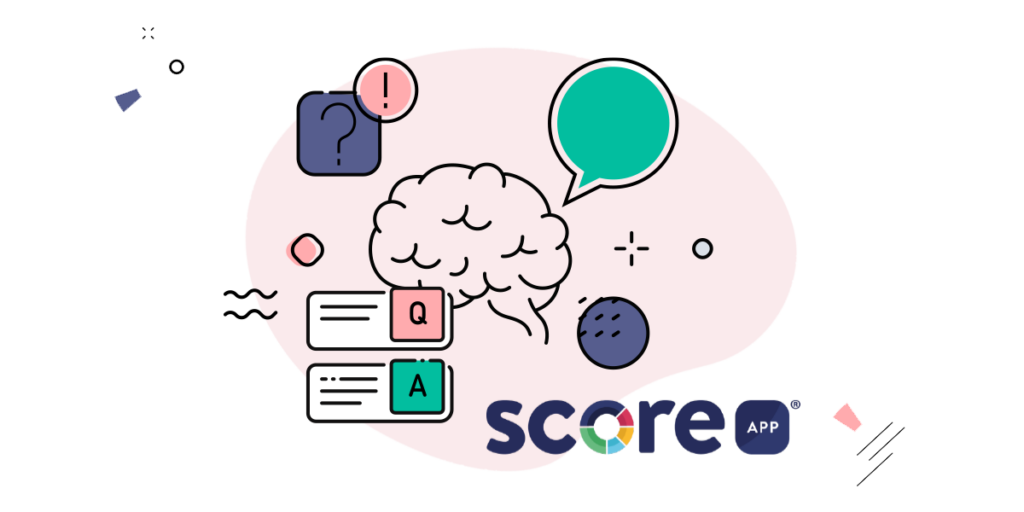
ScoreApp embeds several key buyer psychology techniques throughout the platform, including the Zeigarnik effect. You can get all the business benefits without having to learn the details yourself. Here’s how:
1. Video mini-courses and challenges
Video mini-courses and challenges are a brilliant way to deliver value quickly, build momentum, and keep your audience coming back. By breaking your content into short, purposeful videos, you make learning feel easy—and exciting. Each lesson becomes a win, driving people to move forward and see what’s next.
How the Zeigarnik effect works in this context
When each lesson ends with a clear next step or a hint of what’s to come, your audience will stay curious and motivated. It’s all about building anticipation. The more progress they make, the more compelled they feel to finish—especially when the content is delivered in a way that feels smooth, structured, and achievable.
How ScoreApp helps
ScoreApp makes it easy to create video mini-courses that flow. Each lesson can build naturally into the next, with simple tools to add quizzes that reinforce learning and keep people engaged. Progress tracking happens automatically, and built-in reminders nudge people back at just the right moment. It’s the perfect setup to turn interest into action, and action into results.
2. Lead-generating quizzes and assessments
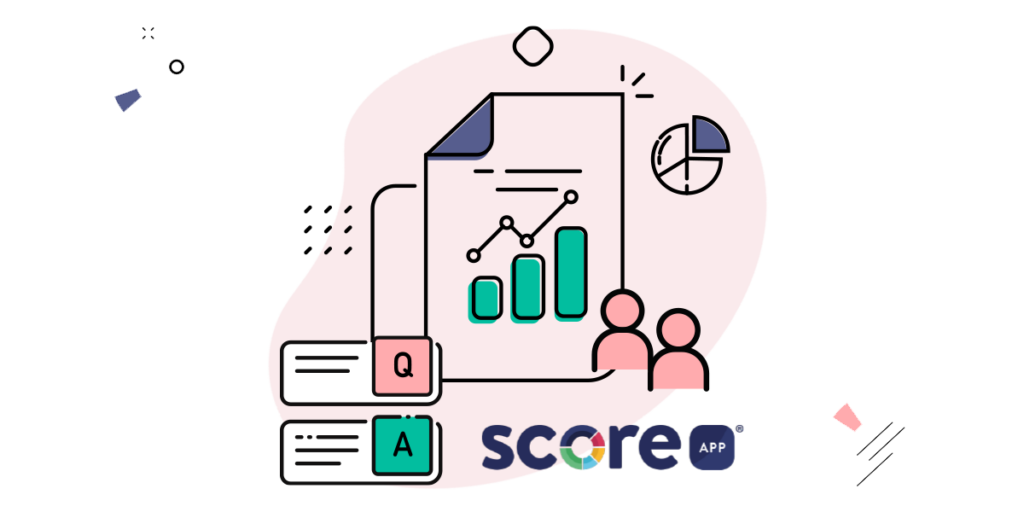
Quizzes are a powerful way to attract attention and turn it into qualified leads. When done well, they feel interactive, valuable, and worth finishing. A good quiz doesn’t just collect answers—it creates a sense of progress and curiosity that keeps people engaged right through to the results.
How the Zeigarnik effect works in this context
Once someone starts a quiz, they’re likely to keep going—especially when they know they’re close to getting their results. Simple cues such as progress indicators or result teasers encourage people to stay focused and complete what they’ve started.
How ScoreApp helps
With ScoreApp, you can build engaging quizzes that feel smooth from start to finish. Use progress bars to show how far someone’s come and how close they are to seeing their score. If someone drops off, automated follow-ups gently bring them back to pick up where they left off. It’s a simple, effective way to increase completions and turn more interactions into leads.
3. Step-by-step quiz funnels and score reports
Structured quiz funnels and score reports guide people through a clear journey. When each step feels purposeful and easy to follow, users stay engaged and move forward. Whether it’s answering a few more questions or exploring their results, these small steps build momentum.
How the Zeigarnik effect works in this context
Each deliberately unfinished step becomes a subtle prompt to continue, especially when the end goal is in sight and feels valuable.
How ScoreApp helps
ScoreApp’s quiz funnels are designed to lead people forward, step by step. Each stage feels manageable and keeps users focused on what’s next. Personalized score reports reveal just enough to spark interest, while leaving room for further action. With clear, well-placed CTAs, you can guide users to book a call, download more content, or take the next logical step in your sales process.
4. Interactive email sequences and follow-ups
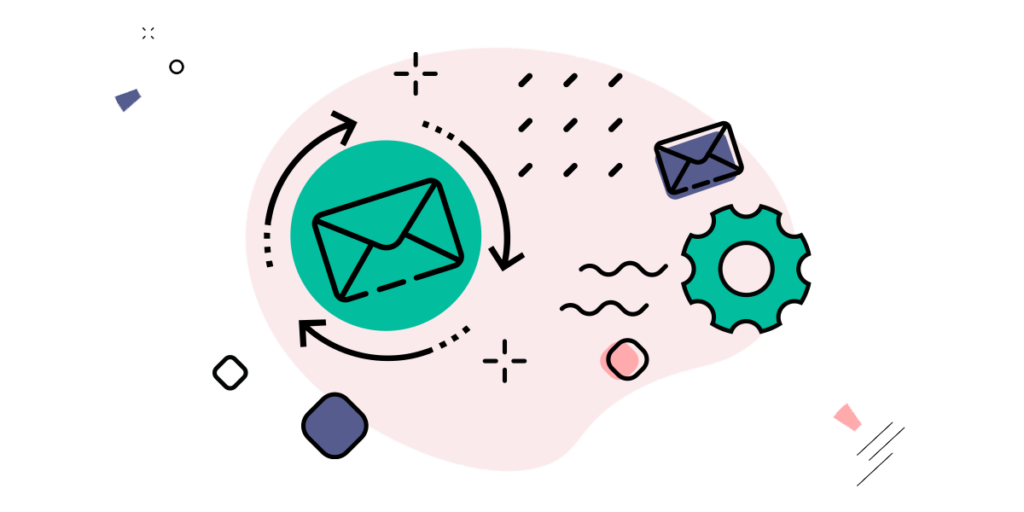
A well-crafted email sequence keeps your audience engaged beyond the first click. Whether it’s a reminder, a teaser, or a useful insight, every message is a chance to bring people back and move them forward. When emails feel timely and relevant, they’re far more likely to get opened—and acted on.
How the Zeigarnik effect works in this context
When an email hints at something left unfinished or partially revealed, like a quiz result or an incomplete lesson, it naturally draws people in. That sense of ‘I need to know more’ boosts both open and clickthrough rates, keeping your audience actively engaged.
How ScoreApp helps
ScoreApp makes it easy to set up automated email sequences that do the heavy lifting for you. Remind users to finish their quiz or course, tease their results to spark curiosity, and deliver content in manageable, spaced-out steps. It’s a simple way to stay top of mind, build stronger relationships, and keep people interacting with your brand over time.
5. Gamified experiences and incentives
Adding gamified elements to your content makes the experience more engaging and enjoyable. When people can see their progress and have a clear goal to work toward, they’re more likely to keep going. It turns passive participation into active involvement—there’s huge motivation just having the finish line in sight.
How the Zeigarnik effect works in this context
Small milestones, paired with the promise of a reward or outcome, create positive momentum that carries them through.
How ScoreApp helps
ScoreApp includes built-in gamification features that keep users motivated. Progress tracking shows how close they are to finishing (“You’re almost there!”), while incentives such as badges, certificates, or bonus content give them something to aim for. It’s an easy way to make the experience more interactive for them and more likely to lead to valuable insights for you.
Keep your clients hooked with the Zeigarnik effect
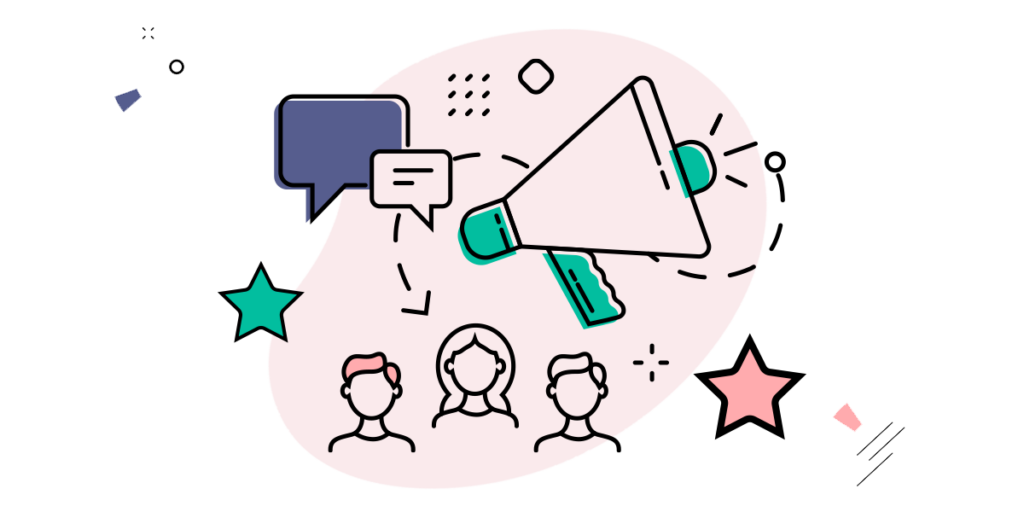
The Zeigarnik effect is a game-changer for engagement, helping businesses capture attention, drive conversions, and build lasting customer relationships. By using it strategically within ScoreApp, you can:
- Keep leads engaged longer with experiences that are easy to start and hard to leave unfinished
- Encourage repeat visits and actions by building curiosity and clear next steps into your content
- Increase conversions by gently nudging users to complete the journeys they’ve already begun
- Build stronger customer relationships through ongoing, meaningful interaction.
The best part? You don’t even have to think about it. ScoreApp has all the Zeigarnik effect marketing magic baked in.
Get started and create your first interactive quiz with ScoreApp today.
